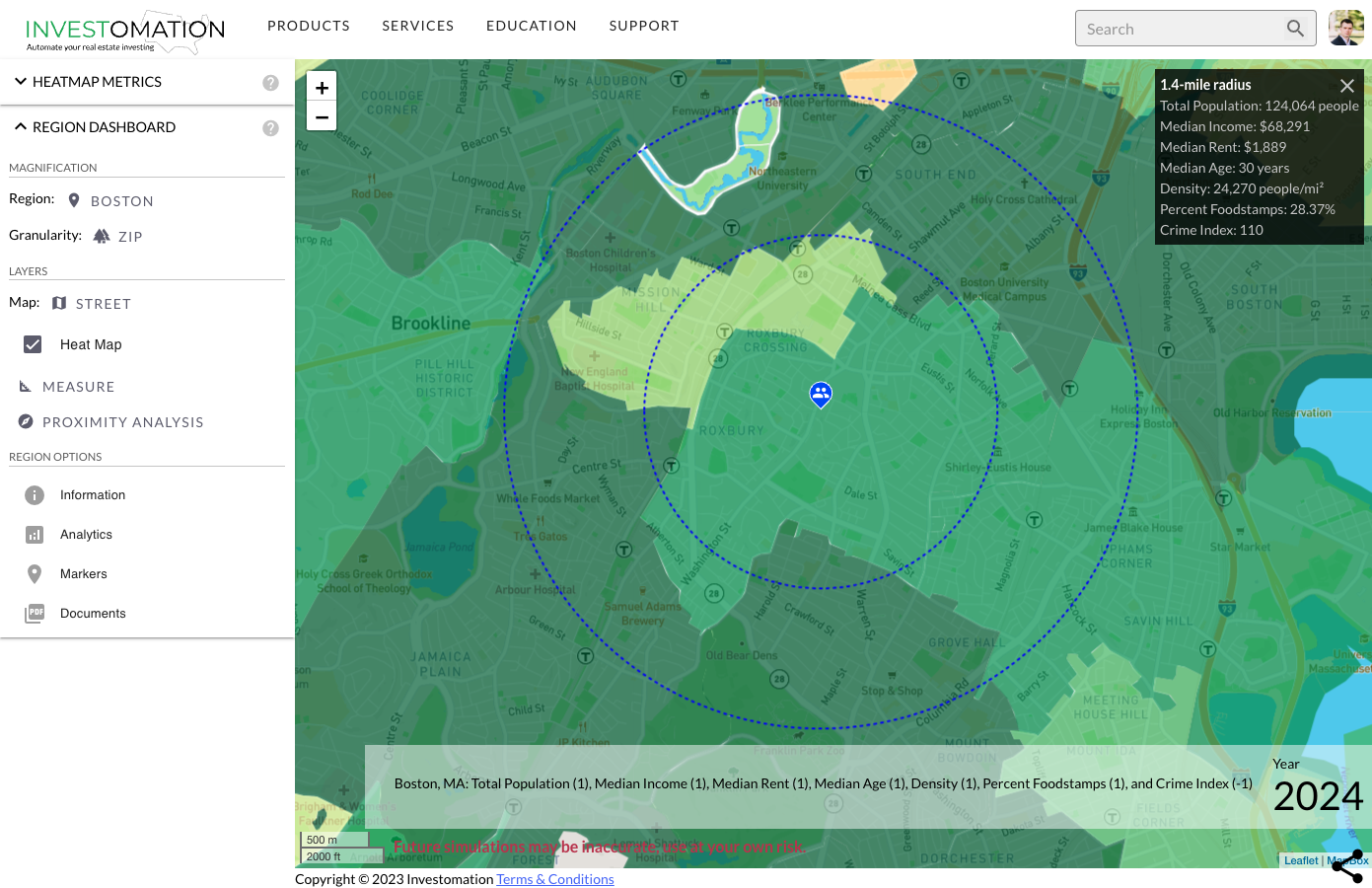Proximity Analysis
 In self-storage, one of the first steps to due diligence is something known as a demand analysis. It's a ballpark approach to estimating whether there is demand for additional self-storage in the area. This analysis is useful not just when building a new facility, but even when buying an existing one. If there is no demand, we can't raise rents. If there is no demand, we can't increase occupancy. So how do we estimate demand?
In self-storage, one of the first steps to due diligence is something known as a demand analysis. It's a ballpark approach to estimating whether there is demand for additional self-storage in the area. This analysis is useful not just when building a new facility, but even when buying an existing one. If there is no demand, we can't raise rents. If there is no demand, we can't increase occupancy. So how do we estimate demand?
We do this by analyzing existing storage and population within a certain radius (typically 3 miles) of the location we're analyzing. This analysis isn't particularly hard, but it is tedius. Getting the population involves going either to the county website or to Census directly. The problem is that our facility probably won't be in the middle of the county we're analyzing, nor will the county form a neat 3-mile circle around our facility. We will often need to examine multiple counties/zipcodes/tracts and manually calculate the proportion of the population within the radius.
This same kind of analysis is useful for other real estate development projects, as banks will often want to see a demand analysis before they will lend you money. They will want to understand local demographics (not demographics of the entire county), and depending on what you're building, they may even want to see a breakdown of nearby businesses. Franchises do similar analysis when deciding where to open a new location.
This is where the newly added Proximity Analysis comes in handy. You can select it from the Region Dashboard, and center it around an existing marker or any location on the map.

We've limited the minimum radius to quarter of a mile, since anything below that is too small of an area to be accurate. You can overlay multiple radii over the same location to see how the metrics change as you move further away from the center. We use the most accurate data available for each metric, for some metrics that means using block-level data, for others it may be limited to zipcode-level. Needless to say, no sane human would be doing such analysis manually at block-level, which gives you a competitive advantage over other investors.